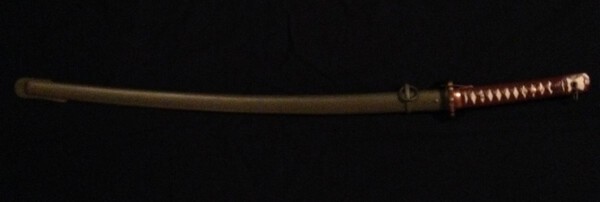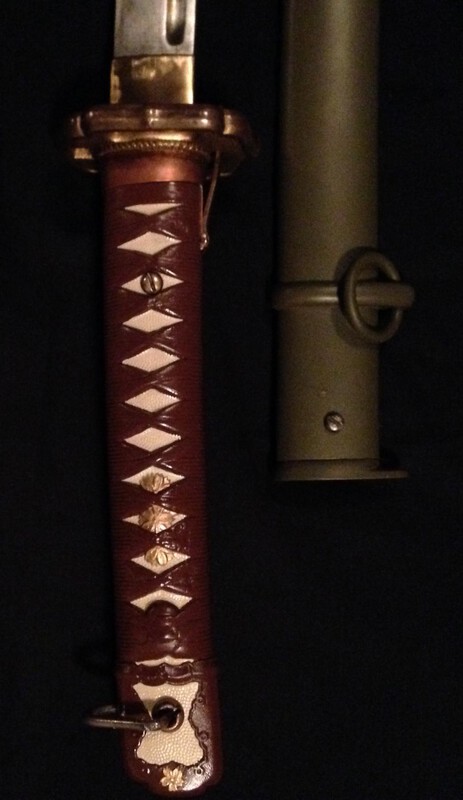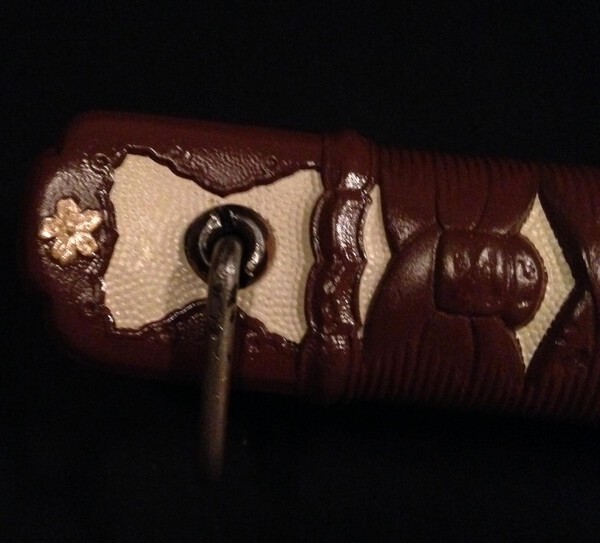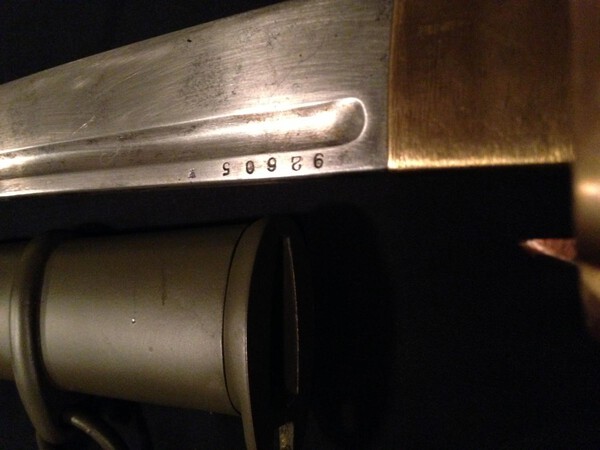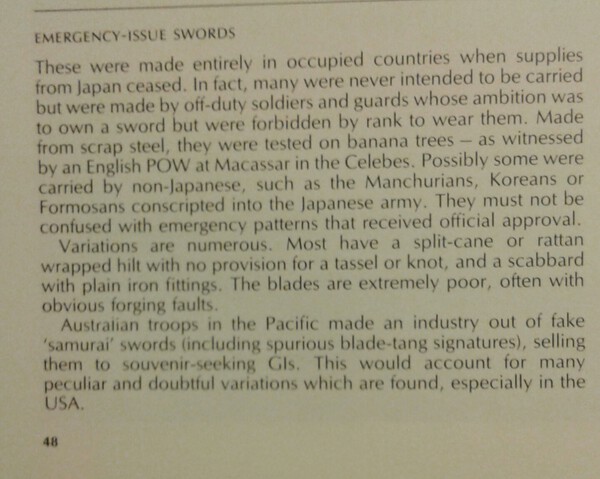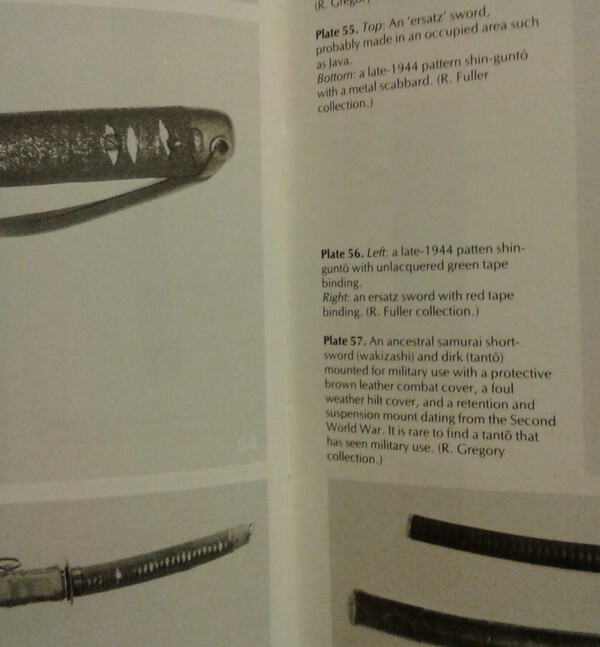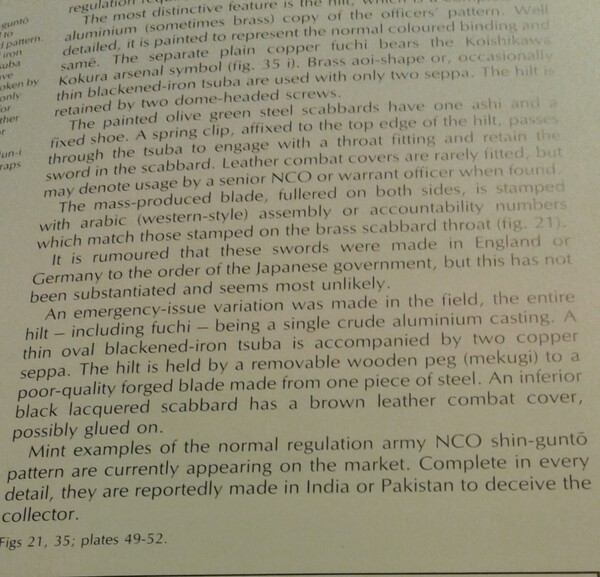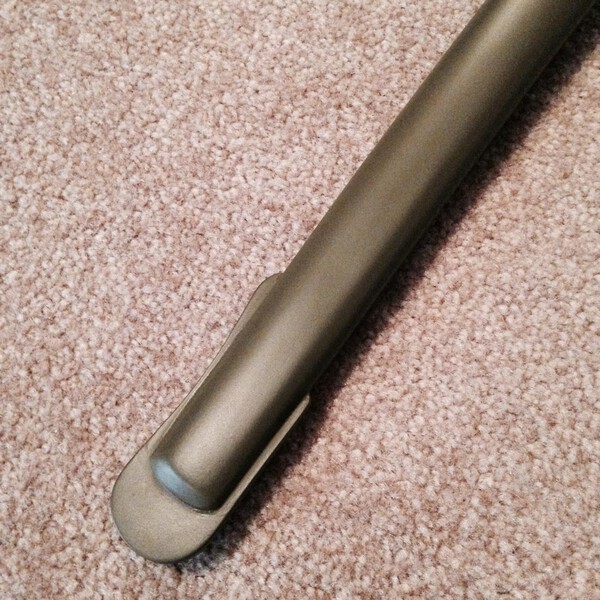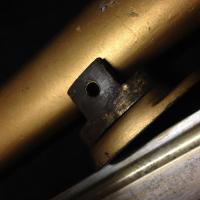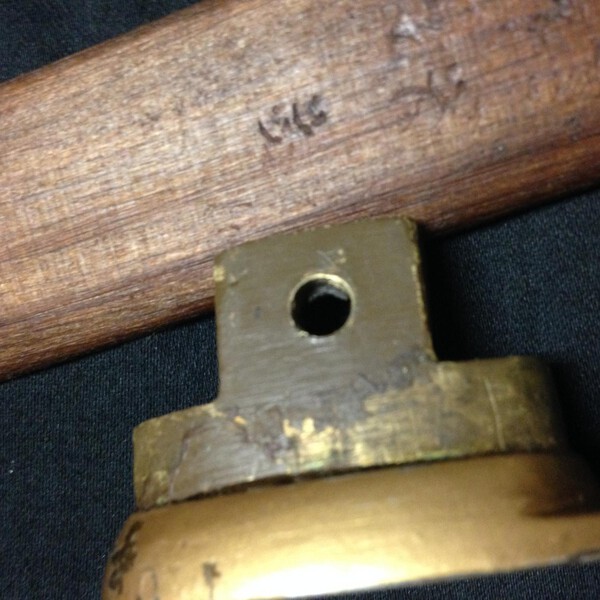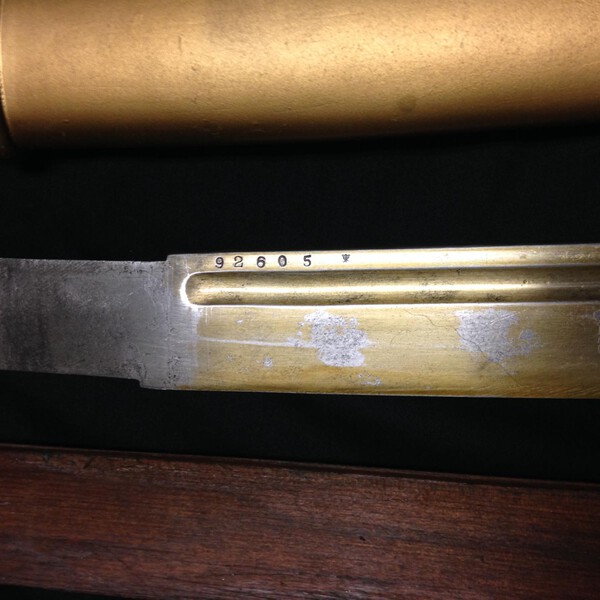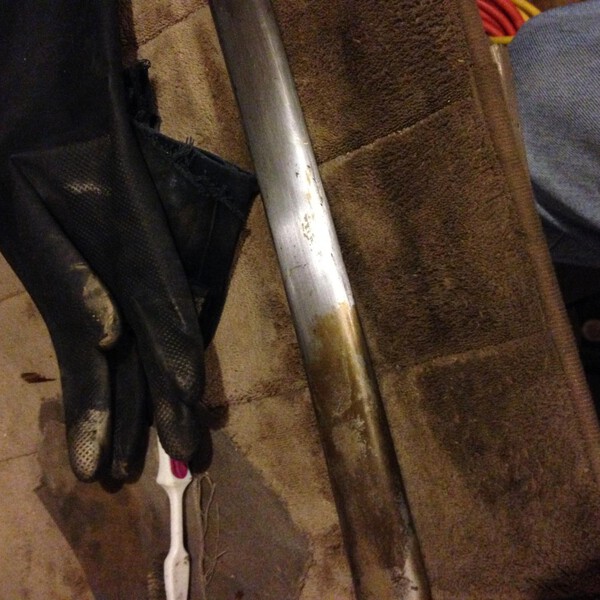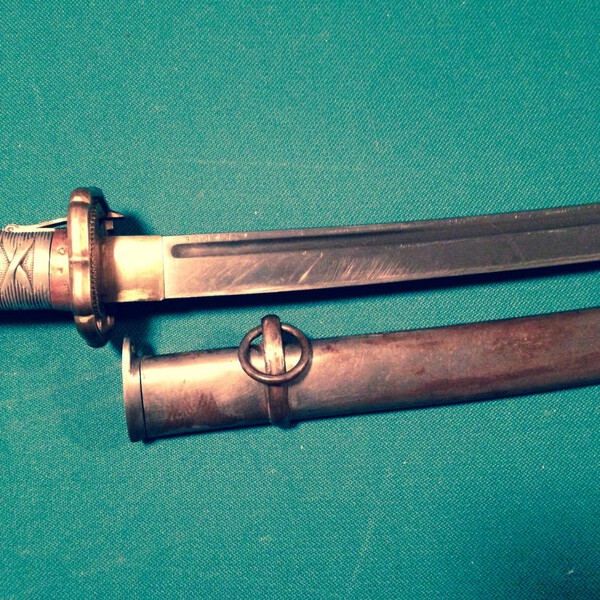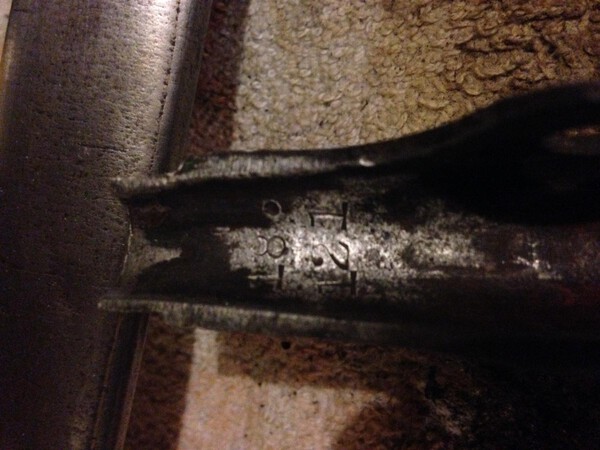-
Posts
12,896 -
Joined
-
Last visited
-
Days Won
154
Everything posted by Bruce Pennington
-

Any Tips For Period Re-Paint?
Bruce Pennington replied to Bruce Pennington's topic in Military Swords of Japan
Paul, powerful story! If I knew the story of one like that, I'd keep it too!!!. So far, counting your story, I've hear 3. The other two were swords painted gold, laying in the corner of a theatre in Avon-on-trent, England, for plays; the other a kid who painted his dad's sword for fun. I don't know the stories behind mine. All I know is that in 1926, a new Emporer was inaguarated in Japan. There were scabbards painted gold for that occasion, but due to the date, 1926, they couldn't have been guntos. So, I gave in and re-painted mine. -

Is My Tang Length Normal (Forgive Double Entendre)
Bruce Pennington replied to Shawk66's topic in Military Swords of Japan
Dude! I'm in the Springs too. Maybe we should start our own War Swords club! In your settings, you can set a signature for your name, or just sign each post so we know what to call each other (part of the forum rules, too). We really need some better pics! The second one isn't readable. Regardless of the re-paint, it would still be great to see pics of the whole rig of both swords, so we know more of what we speak! -

Any Tips For Period Re-Paint?
Bruce Pennington replied to Bruce Pennington's topic in Military Swords of Japan
Thanks for the laugh, Brian! Chad, I'm fairly new at this, but I haven't run into any re-painted gunto's on the market, have you? I'm not selling mine and just couldn't stand to see it painted gold. Even the blade was gold painted. -

Any Tips For Period Re-Paint?
Bruce Pennington replied to Bruce Pennington's topic in Military Swords of Japan
Ok, Steve, that's a good point! I won't do anything rash, and think about it for a while. Thanks guys! -

Any Tips For Period Re-Paint?
Bruce Pennington replied to Bruce Pennington's topic in Military Swords of Japan
Thanks Paul! I think that's a great idea. The whole problem is that it doesn't look used, so I'll give it a try, and man-handle the thing a bit! -

Any Tips For Period Re-Paint?
Bruce Pennington replied to Bruce Pennington's topic in Military Swords of Japan
Well here's the final product! I hate that it looks too perfect instead of worn with actual use, but the only other choices were all gold or all silver bare metal. So I decided to have a friend do a total re-paint. -
Seems to fit in with all the other "made in occupied lands" swords discussed in this thread. There is one on this link with that same stamp (http://www.militaria.co.za/nmb/topic/5999-arsenal-stamps/page-8). The guys in that discussion called it fake, but having learned so much more about these kind of swords, lately, I would consider both to be legit - not Japanese, but made during the war for local troops cooperating with the Japanese.
-
Steve, I saw your byline. Have you been to Gunto Art Swords? He's got serial number 1114, copper handle for sale: http://www.guntoartswords.com/010810.html Stegel, thanks for the tip on F&G, I will find the newer one. Looking forward to reading it! Very fascinating about the winter cammo. Makes sense now that you mention it.
-
Dominic, those are really cool! I've seen white wrapped tuska and white laquered cane wrapped saya; but that's the first white painted gunto I've seen! As to Fuller & Gregory, it is a small book compared to Dawson's Swords of Imperial Japan, and was produced in 1987. Guys that are expert in WWII guntos say there is 'some' info in it that have since been found to be incorrect, but it is still a highly valuable source of info. It has some unique stuff not found in Dawson, too. Java - I wasn't saying that it, or any other "field" sword making locations were official, but most nations had (and still have) people who make swords. If you lived in an occupied nation, during war, and were a swordmaker, you might have an interest, for the sake of making a living, in making swords/parts for the troops. Bradley's "Flyboys" points out that hundreds of thousands of Japanese army troops were litterally abandoned to survive off the locals in many Pacific locations. They had no supply lines, no food, no re-supply of ammo or weapons. If I were in their shoes, I would be getting my equipment repaired and/or replaced any way I could. I suspect some of the odd pieces we see on clearly official guntos came about this way.
-
Very cool! I've never seen mon on the fuchi before. Have you tried to figure out the name it represents? Also, that habaki made of silver, or silver plated?
-

Type 95 Variant Legit Or Fake?
Bruce Pennington replied to Bruce Pennington's topic in Military Swords of Japan
Thanks Shamsy! I found what you are talking of in my Dawson. Looks Ok! -
Stephen, The parts look legit. The tsuba matches Ohmura's 'middle type' here:http://ohmura-study.net/905.html Not sure about the paint. The "copper" is really paint over brass parts. I agree the color is off, so it was an end of war korshirae, never used, paint different because of the stage of the war, or my guess is totally repainted by new owner in Taiwan. I haven't heard problems with Taiwan before, but personally I wouldn't buy anything coming from China.
-

Type 95 Variant Legit Or Fake?
Bruce Pennington replied to Bruce Pennington's topic in Military Swords of Japan
Thanks Charlie and Hamfish! I'm going for it! Stephen and Curt - only the fuchi is copper, the handle is aluminum. thanks guys! -
Guys, I'm interested in picking up this variant of the Type 95 (2b I think?), but this one has a copper fuchi with stamps. Ohmura's example has the black painted steel fuchi. I'm on the road and don't have my F&G or my Dawson. Anyone recall seeing legit Type 95 variants like this with copper fuchi?
-
Dominic, I agree with Hoanh, the parts look legit, but someone has spray painted them with copper paint (easily stripped with acetone without harming the parts) The leather saya looks legit, too, but the fastener w/snap looks cheaply made - maybe a field repair? The kabuto-gane looks cheaply made too. I've been reading that some swords and/or koshirae were being made by occupied lands, like Burma, Phillipines, etc. Just an idea, maybe this one has koshirae picked up on location by the troop carrying it. The blade looks great!
-

Any Tips For Period Re-Paint?
Bruce Pennington replied to Bruce Pennington's topic in Military Swords of Japan
Ok, saya is finished. Pics distort the color a bit but I think I got a good close color. I actually looks TOO good! But it's way better than that gold. A friend that does primo model paint jobs is working on the tsuka. -

Interesting Lot Of 4 Blades
Bruce Pennington replied to FletchSan's topic in Military Swords of Japan
Defiinitely need better pics! Fuller & Gregory have pics of white ratan wrapped saya, so it was something done by the troops, though unusual all the same! -

Any Tips For Period Re-Paint?
Bruce Pennington replied to Bruce Pennington's topic in Military Swords of Japan
Thanks guys! both of those look good. I will investigate them. I know a couple of guys that do good model aircraft and model train painting. I will contact them to see if they'll do the job for me! -
Hamfish, Thanks for the info! It was sold to me as a Japanese cavalry sword, and while I don't know anything about the cavalry swords of other nations, this one appears to fit the look and dimensions of a "Ko". The missing knuckle-guard stamps bother me; but issuing to the Chinese, like you say, might explain that. This one is really worn, the wooden grip is very worn, the blade shows many sharpenings (a really bad one with a grinder - probably some dumb boob after the war!) and the blade is very old with much corrosion. Also, the leather finger-loop is so old, I broke it by sticking my finger in it a couple of times! In fact, I only bought this one because it still had the loop! Here are the dates inside the backstrap and on the end of the hand-guard where nakago goes through the end of it:
-
Guys, any tips on what kind of paint and where to get it, for re-painting my Type-95 saya? It had been totally stripped and painted gold before I got it, so I've stripped the gold and would like to paint it something more original. There is a small section on the screw tab of the kabuto-gane of the original color.
-
-
I'd like to start an on-going thread where we post the unusual. After reading my Fuller & Gregory, where he has saya wrapped in white cane, or gunto without stamps or numbers missing. I'll begin with my 1918 "Ko" Cavalry sword. It is unusual because there are no stamps on the hand-guard. Also, the serial number on the drag has been overstamped with an additional "1". Dawson discusses the fact that even though production stopped in 1935, they were carried and used through WWII. Damaged ones were sent back to factories for refurbishment. I believe this was what happened to this one. The hand-guard was replaced and never stamped, and the serial number of another saya was filed off (you can see the marks) and the new number stamped oddly. Additionally, dates were normally in kanji on the guard. But this date is english, just like the assembly numbers of WWII shingunto (which would also explain why the date wasn't on the guard)
-
Thanks for the pics! I'm sorry about thinking the seppa were unusual, the lighting in your first photo cussed my eyes to imagine something that wasn't there! Your sword looks legit. My personal opinion on blades not sharpened and missing numbers is that humans were doing all the work. Hundreds of factories were making thousands of swords with people involved in the process. People miss things. Sometimes the unusual things makes a collectible item all the more interesting. Enjoy!


